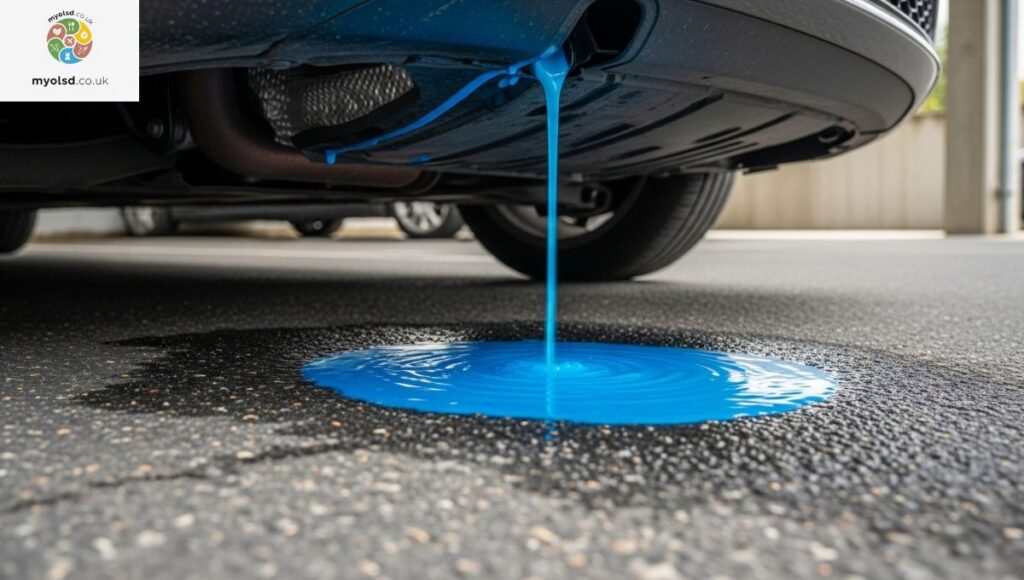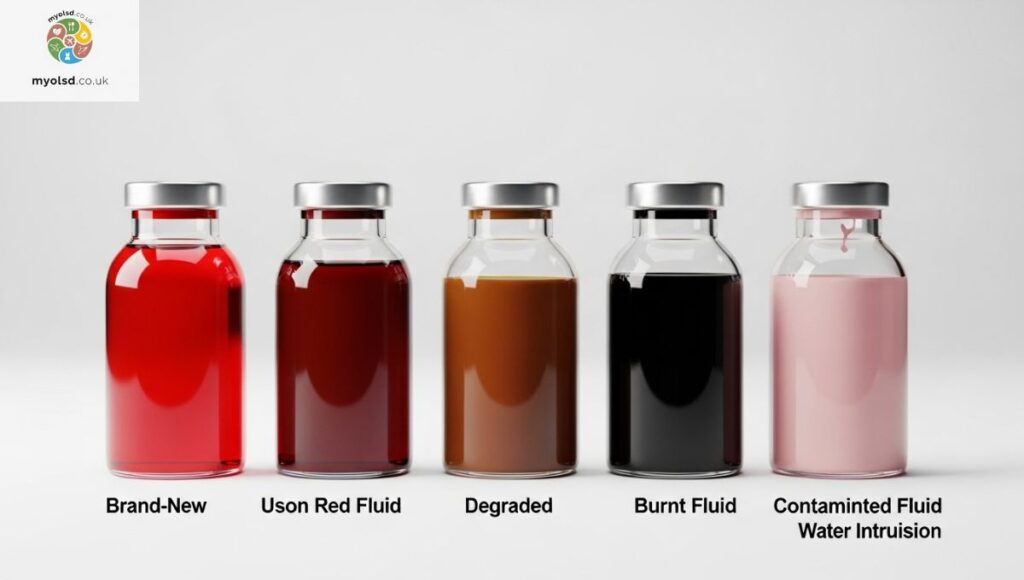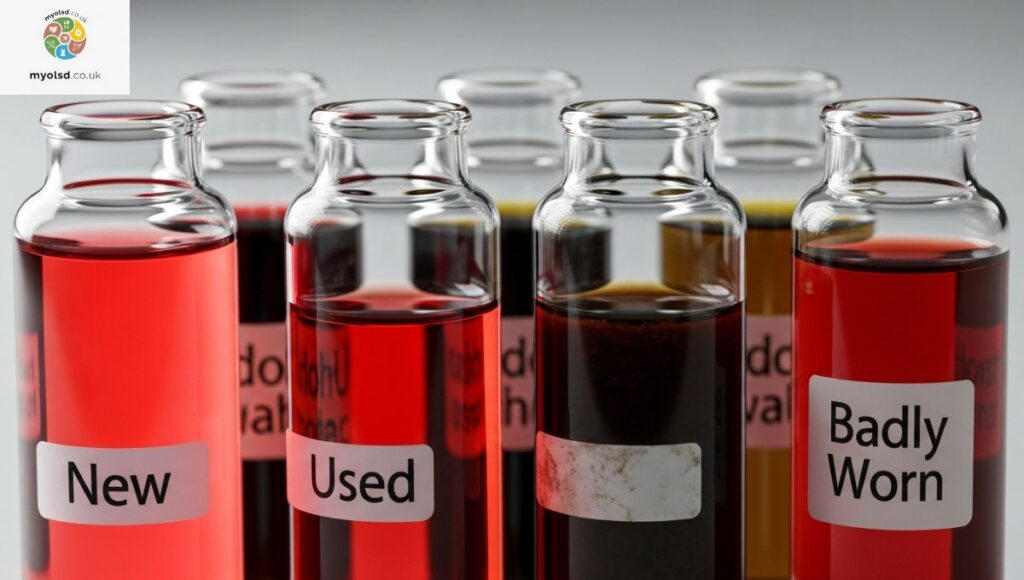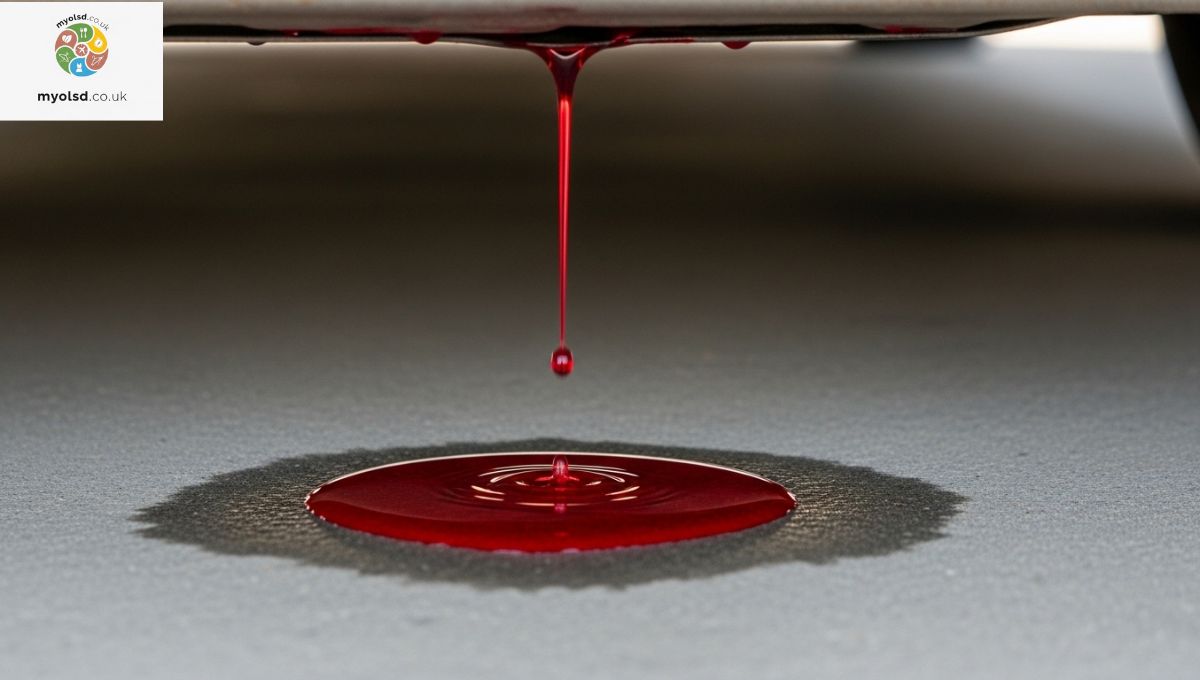Ever walked out to your driveway and noticed a strange red puddle under your car? That sinking feeling hits is it oil, coolant, or something worse? If you’ve ever found yourself wondering what color is transmission fluid when it leaks, you’re definitely not alone. It’s one of those moments every driver dreads but needs to understand before a small leak turns into a big repair bill.
In this post, we’ll break down exactly what transmission fluid looks like when it leaks, why the color matters, and how it can tell you a lot about your vehicle’s health. You’ll also learn how to spot the difference between normal and burnt fluid, what each shade means, and when it’s time to get your car checked. Let’s make sense of those mysterious stains and keep your transmission running smoothly.
Why Does the Transmission Fluid Leak?

Transmission fluid can leak for several reasons, and most of them stem from worn-out seals, damaged gaskets, or loose components. Over time, the heat, vibration, and pressure inside your transmission can cause rubber seals and metal parts to degrade. Once that happens, small leaks start appearing often showing up as red or brown spots under your car.
Sometimes, a transmission fluid leak comes from the transmission pan, cooler lines, or driveshaft seal. If the leak is small, you might just notice stains on your driveway. But if the leak is significant, your car might start showing symptoms like delayed gear shifts or strange noises. That’s why spotting the color early can save you from a much costlier repair later.
Is It Safe to Drive When Red Fluid Is Leaking From the Car?
Short answer: not really. Driving with leaking red transmission fluid might seem harmless at first, but it can quickly lead to overheating, slipping gears, or even total transmission failure. When fluid levels drop, the internal parts of your gearbox lose lubrication, causing metal-to-metal friction.
If you see a red puddle under your car, check the transmission fluid level immediately using the dipstick. Low or burnt fluid means your transmission needs attention fast. Even if the leak seems small, it’s best to drive carefully to a nearby mechanic or service center instead of ignoring it.
Other Possible Causes Behind Leaking Red Fluid From a Car
While a red fluid leak often points to transmission problems, it’s not the only possibility. Here are a few other systems that can cause similar leaks:
Engine Coolant Leak
Some engine coolants, especially those mixed with rust inhibitors, can appear reddish or orange. If the fluid feels watery rather than oily and has a sweet smell, it’s probably coolant, not transmission fluid.
Power Steering Leak
Power steering fluid can also be red or pink, depending on the vehicle model. If the leak appears near the front of the engine bay and the steering feels stiff or noisy, your power steering system might be the culprit.
Read more Article: When Can I Sleep on My Side After Jaw Surgery?
How To Determine the Source of Red Fluid Leaking From Cars

Start by identifying where the fluid is dripping from. Transmission leaks usually form puddles near the middle or front section of the car. Check the color bright red fluid usually means it’s fresh, while brown or black fluid means it’s burnt or contaminated.
Next, smell the fluid. Transmission oil typically has a petroleum-like scent, while coolant smells sweet and brake fluid is more neutral. You can also check the texture transmission fluid feels slick or oily, while coolant and water-based fluids don’t.
If you’re still unsure, place a clean white paper or cardboard under your car overnight. The next morning, examine the spot’s color and location this simple trick helps confirm whether it’s a transmission fluid leak or something else.
How To Stop Red Fluid Leaking From a Car
Fixing a transmission fluid leak starts with locating the source. Sometimes, tightening bolts on the transmission pan or replacing a damaged gasket is all it takes. If the issue comes from worn seals, cooler lines, or a cracked pan, those parts may need replacement.
For older cars, a transmission fluid flush and new filter can prevent future leaks and extend the system’s life. However, avoid temporary stop leak additives they may thicken the fluid but rarely fix the root cause. It’s always better to have a professional inspection to ensure your car stays reliable.
Identifying Car Fluid Leak Colors and What They Mean
When something leaks under your vehicle, color is your first clue. Understanding the difference between various car fluid colors helps you determine what’s leaking and how serious it is.
Yellow or Green Fluid Leaking from Car
Usually indicates coolant or antifreeze leak. It’s typically thin and has a sweet odor. Check the radiator, hoses, or water pump.
Red Fluid Leaking from Car
That’s often transmission fluid or power steering fluid. It feels oily and slick. Transmission leaks typically form near the middle of the car.
Clear Fluid Leaking from Car
If the liquid is clear and odorless, it’s probably just AC condensation or water from the exhaust nothing to worry about.
Blue Liquid Leaking from Car

This is commonly washer fluid. The color varies from light blue to green depending on brand.
Orange Fluid Leaking from Car
It could be old coolant that’s rusted inside the radiator, or in rare cases, transmission fluid mixed with debris.
Brown or Black Fluid Leaking from Car
This often signals engine oil or dirty transmission fluid. A burnt smell or thick consistency usually means it’s overdue for a change.
Other Considerations to Keep in Mind
- Always check fluid levels after noticing leaks.
- Inspect under the engine bay for residue or stains.
- Consult your owner’s manual for fluid types and intervals.
- Schedule preventive maintenance regularly.
Bring Your Vehicle to Jiffy Lube for Fluid Services
Jiffy Lube and similar service centers can inspect, flush, and replace fluids as part of your car maintenance routine. They can identify fluid contamination, leaks, and perform a full transmission system care checkup.
Read more Article: When Can I Sleep on My Side After Jaw Surgery?
Transmission Fluid Color

The color of transmission fluid tells a story about your vehicle’s health.
- Bright red: New and healthy no action needed.
- Brick red or maroon: Slightly aged but still okay.
- Rusty or copper red: Contaminated service recommended soon.
- Dark brown or black: Burnt or old fluid needs immediate attention.
If your transmission fluid turns brown, it’s often due to oxidation and friction. This change reduces the fluid’s ability to lubricate gears, which can lead to slipping or overheating.
Red Fluid Leaking from My Car
If you notice red fluid leaking from your car, check under the hood and around the transmission pan. Most automatic transmissions use red-dyed fluid, making leaks easier to identify. However, power steering fluid and transmission fluid often share similar hues, so identifying the leak’s source matters.
Check the consistency transmission fluid feels slick like oil, while power steering fluid can feel thinner. Also, note the smell burnt transmission fluid often carries a strong petroleum odor, a sign of overheating or internal wear.
More Guidelines on Transmission Fluid Color
A transmission fluid color guide is one of the easiest diagnostic tools you can use at home. Here’s a simple summary:
| Color | Condition | Action |
| Bright red | Fresh | No service needed |
| Deep red | Normal aging | Monitor levels |
| Rusty brown | Contaminated | Replace fluid |
| Black | Burnt | Immediate service |
| Milky pink | Coolant contamination | Urgent inspection |
Keeping an eye on these shades helps you track fluid health and prevent costly transmission replacement or rebuilds later.
Get Your Car Serviced at Smith Chevrolet Of Turlock
If you’re near Modesto or the Ceres area and notice fluid leaks, visiting a professional service center like Smith Chevrolet of Turlock ensures proper diagnosis and repair. Certified mechanics can check for fluid consistency, gasket leaks, or internal damage before it worsens.
They’ll also verify your ATF levels, flush the system if necessary, and replace worn-out filters. Routine checks like this are vital for maintaining your vehicle performance and overall drivetrain health.
More from Smith Chevrolet Of Turlock
Beyond transmission issues, their service experts handle all types of car maintenance, from brake fluid changes to coolant flushes. Keeping up with preventive maintenance not only prevents leaks but also extends the lifespan of your car’s major systems.
If you notice fluid discoloration, strange odors, or shifting delays, don’t wait. Schedule a service appointment to ensure your transmission stays in top shape.
What Color Is Transmission Fluid?

New transmission fluid is typically bright red, designed that way to make leaks easy to spot. As the fluid ages, it darkens due to heat, contaminants, and friction. If your transmission fluid turns brown, it’s time to replace it before damage occurs.
Checking the dipstick every few months helps you monitor both color and level. Always follow your owner’s manual for the right fluid type and service intervals.
Transmission Fluid Color Guide
A transmission color chart helps diagnose problems fast:
- Bright red: Healthy fluid.
- Dark red: Needs monitoring.
- Brown: Dirty, nearing service.
- Black: Burnt, possibly internal damage.
Also, note the smell and consistency burnt or thickened fluid indicates overheating or clutch wear inside the transmission.
Why Is Red Fluid Leaking From My Car?
The main reason red fluid leaks appear is due to damaged transmission seals, cracked pans, or degraded gaskets. Sometimes, the problem lies in the cooler lines or connections. Over time, vibration and pressure weaken these components, causing leaks near the middle of the car.
Ignoring it may lead to a burnt transmission or costly replacement. So if you notice red stains under your vehicle, get it checked immediately.
How to Prepare For Transmission Problems
Here are a few quick tips to keep your transmission leak-free and healthy:
- Use genuine OEM parts and the correct automatic transmission fluid.
- Follow your maintenance schedule for regular fluid checks.
- Replace the transmission filter as recommended.
- Keep an eye out for burnt smells, slipping gears, or overheating signs.
Proper transmission maintenance prevents leaks, improves shifting, and boosts your car’s reliability.
Get Trusted Jaguar Service in West Palm Beach

If you’re in Florida, Jaguar Palm Beach provides factory-trained technicians who understand how to diagnose and fix transmission issues quickly. They’ll inspect fluid levels, check for contamination, and make sure your transmission system runs smoothly.
You can even take advantage of their service coupons for affordable maintenance.
Conclusion
Knowing what color is transmission fluid when it leaks can make the difference between a simple fix and a major repair. That red puddle under your car isn’t just a stain it’s a message from your vehicle. By identifying the color, smell, and texture early, you can take quick action and protect your transmission from serious damage.
Stay proactive, keep up with fluid checks, and trust professional inspections when something feels off. Your car and your wallet will thank you later.
FAQs
1. How do you tell if you are leaking transmission fluid?
You can tell by spotting red or brown oily spots under your car, usually near the middle or front. You might also notice slipping gears, delayed shifts, or grinding noises while driving.
2. What color is transmission fluid?
Fresh transmission fluid is bright red, while older fluid can appear dark red, brown, or even black as it ages or burns.
3. What color is transmission stop leak?
Most transmission stop leak fluids are red or amber to match regular transmission fluid, making them blend in when added to the system.
4. Is transmission fluid oily or watery?
Transmission fluid feels slick and oily to the touch, not watery. Its thick texture helps lubricate gears and prevent friction.
5. Can I drive with a transmission leak?
It’s not recommended. Driving with a leak can lower fluid levels, cause gear slipping, and damage your transmission permanently.
6. Why is clear oily fluid leaking from the front of my car?
A clear, oily leak near the front may come from the air conditioning system or power steering. Check for consistency if it’s slippery and odorless, it’s likely AC condensation, not a major issue.


88pe20